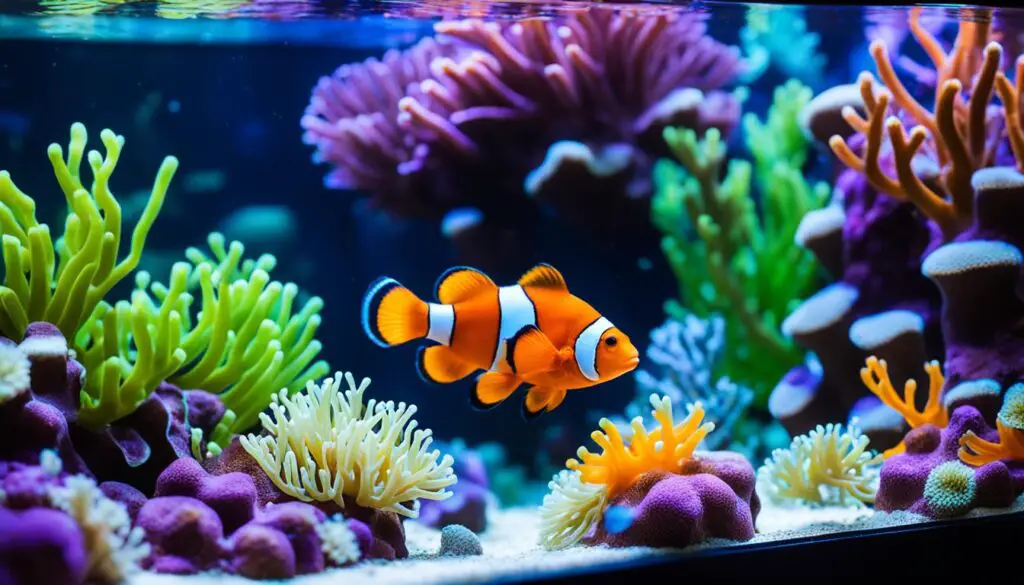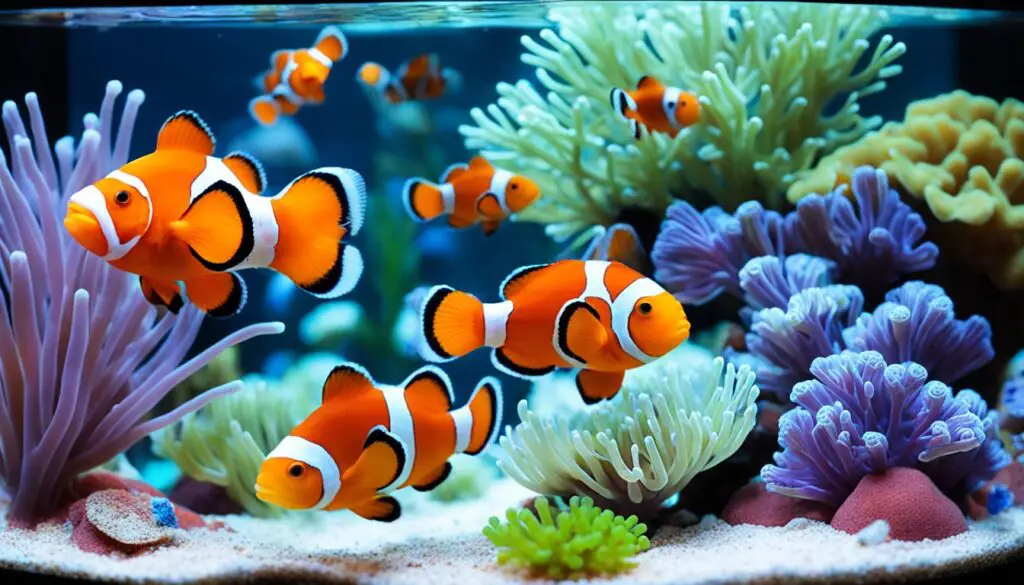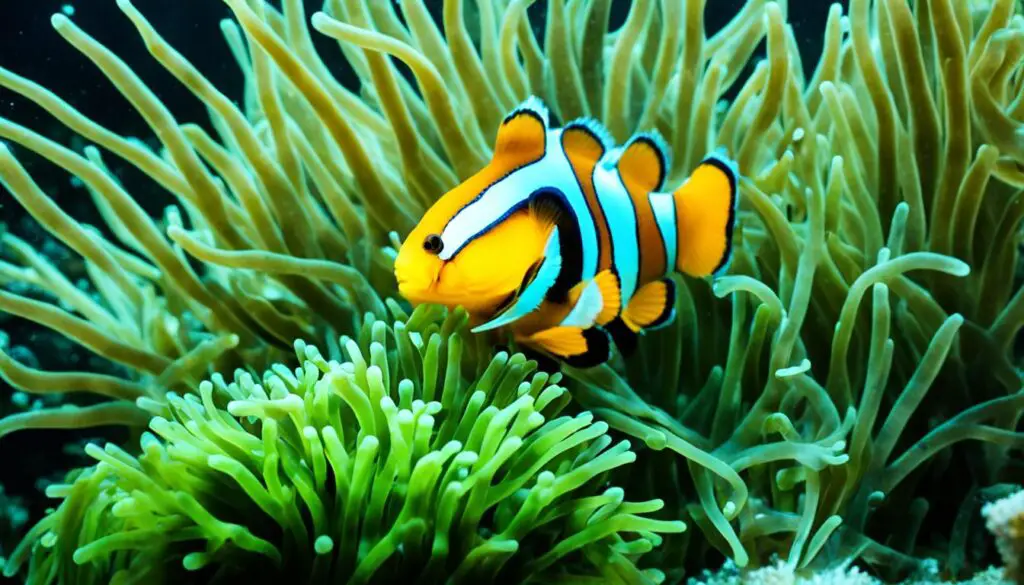Do Starfish Have Teeth
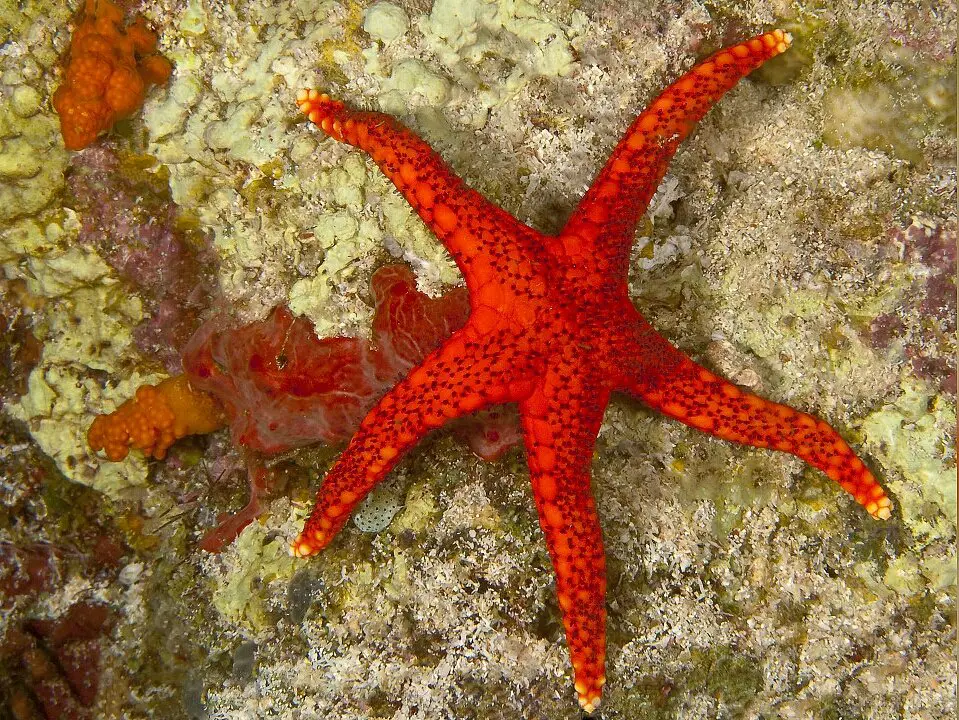
Introduction
Do Starfish Have Teeth: In the colorful tapestry of marine life, starfish stand as one of the most captivating and enigmatic creatures. With their intriguing appearance, intricate patterns, and remarkable regenerative abilities, they have long held a fascination for marine biologists, ocean enthusiasts, and curious minds alike. Yet, beneath their graceful exteriors lies a world of astonishing biological intricacies, including a feature that might surprise many: teeth.
In this exploration, we embark on a journey to unravel the mysteries of starfish anatomy, focusing particularly on the question that piques the curiosity of many: do starfish have teeth? As we delve deeper into the inner workings of these oceanic wonders, we will uncover the remarkable adaptations and evolutionary marvels that define these captivating creatures.
The story of starfish anatomy is a tale of adaptation and survival in the complex underwater ecosystems they inhabit. From their distinctive radial symmetry to their intricate water vascular system, starfish exhibit a myriad of features that allow them to thrive in diverse marine environments. Among these features are specialized structures that serve as tools for capturing and consuming prey.
We will explore not only the presence of teeth in starfish but also the functions, types, and adaptations of these intriguing dental structures. The journey will take us from the anatomy of a starfish’s mouth to the unique feeding strategies they employ in the hunt for food beneath the waves. Moreover, we will delve into the ecological significance of starfish in marine ecosystems, shedding light on their role as both predators and prey.
Join us as we embark on this deep dive into the world of starfish anatomy and teeth, where the secrets of nature’s design and adaptation await our discovery. Through this exploration, we hope to provide a comprehensive understanding of these remarkable creatures and their vital place in the intricate web of life beneath the ocean’s surface.
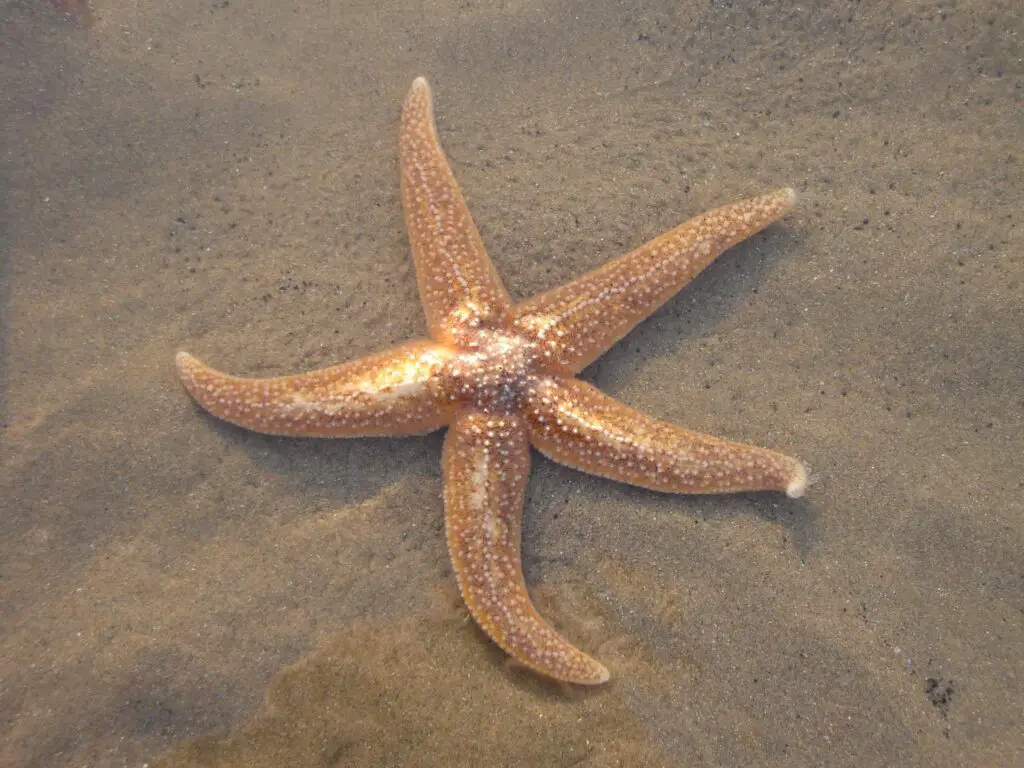
Can a starfish bite you?
Most starfish are not poisonous, and since they can’t bite or sting us, they pose no threat to humans. However, there’s a species called the crown-of-thorns starfish which is venomous, and if their spines pierce the skin they can be venomous.
Starfish are fascinating marine creatures known for their unique anatomy and behaviors. They possess a decentralized nervous system, which means they lack a centralized brain, but they do exhibit certain sensory and motor responses. One common question is whether starfish can bite.
In short, starfish do not possess the capability to bite in the traditional sense. They lack the necessary anatomical structures, such as jaws or teeth, for biting or chewing. However, some species of starfish have specialized structures on their skin called pedicellariae. These small, pincer-like appendages can be found on the surface of the starfish’s body. While they are not intended for biting, these pedicellariae can be sharp and may cause minor irritation if handled roughly.
It’s important to note that starfish are generally harmless to humans. They are not aggressive and do not pose a threat. When handling a starfish, it’s advisable to do so gently to avoid any potential discomfort from the pedicellariae.
In summary, starfish do not bite in the conventional sense due to their lack of jaws or teeth. While some species have sharp pedicellariae, they are not used for biting humans and are generally harmless. It is safe to touch a starfish with care, keeping in mind their unique anatomy and the need to handle them gently to prevent any minor irritation.
Is it true starfish has no brain?
Starfish, also known as Sea Stars, are one of the most beautiful looking animals in the vast ocean. They have a surprisingly unusual anatomy, with no brain or blood, yet are able to digest food outside their body. Regenerating their own arms is perhaps one of the most useful things a starfish can do.
Yes, it is indeed true that starfish, despite their remarkable abilities and behaviors, do not possess a centralized brain like mammals or other highly evolved animals. Instead, starfish have a decentralized nervous system, which is quite different from the complex brain found in many other animals.
A starfish’s nervous system consists of a simple nerve ring that surrounds the mouth and radial nerves that extend into each of its arms. This decentralized arrangement allows starfish to coordinate basic sensory perceptions and motor functions without a central brain.
While starfish lack a brain, they are not devoid of sensory perception or responsiveness. They can react to various environmental stimuli, such as changes in light, temperature, and water currents, using their decentralized nervous system. This enables them to carry out essential behaviors like finding and capturing prey, avoiding predators, and responding to their surroundings.
In essence, while starfish do not possess a centralized brain, their decentralized nervous system allows them to exhibit a range of behaviors and responses that are crucial for their survival in their underwater habitats. Their unique neural architecture is a testament to the diversity of life and the fascinating ways in which different species adapt to their environments.
Does a starfish have a tongue?
Taste sensations. Other animals naturally have no tongues, such as sea stars, sea urchins and other echinoderms, as well as crustaceans, says Chris Mah via email.
No, a starfish does not have a tongue in the way that mammals or some other animals do. Instead, starfish have a unique feeding structure that is quite different from the tongues of more complex creatures.
Starfish have a specialized feeding structure known as a cardiac stomach. This structure is used in their feeding process, which is quite extraordinary. When a starfish captures prey, it everts (extends) its stomach through its mouth and over the prey. The cardiac stomach then releases digestive enzymes onto the prey, breaking down its tissues externally. The liquefied nutrients resulting from this process are then absorbed back into the starfish’s body. This method allows starfish to feed on a variety of prey, including mollusks, bivalves, and other small marine animals.
So, while starfish do not have a tongue in the traditional sense, they have evolved a highly specialized feeding adaptation that enables them to feed efficiently in their aquatic environments. This process is a remarkable example of nature’s diversity in feeding strategies among different species.
Is it OK to touch a starfish?
“Simply put, starfish absorb oxygen from water through channels on their outer body. You should never touch or remove a starfish from the water, as this could lead to them suffocating. “Sunscreen or the oil on our skin can harm sea creatures which is another reason not to touch them.”
It is generally safe to touch a starfish, but there are important considerations to keep in mind to ensure the well-being of both the starfish and the marine environment.
Handle with Care: Starfish have a hard and often rough outer skin that may feel abrasive to the touch. To avoid harming the starfish or injuring yourself, it’s essential to handle them gently and with care. Use a light touch when touching their bodies.
Leave Them in Their Habitat: If you encounter a starfish in its natural habitat, such as a tide pool or a rocky shoreline, it’s best to leave it in the water. Removing them from their environment can disrupt their ecosystems and stress the animals.
Follow Wildlife Guidelines: Some areas may have regulations or guidelines regarding wildlife interaction, including touching starfish. Always respect and adhere to any local regulations to protect both the starfish and the marine environment.
Wash Your Hands: After handling a starfish, it’s a good practice to wash your hands thoroughly with fresh water. This helps remove any saltwater or contaminants from your skin and prevents potential irritation.
In summary, it’s generally safe to touch a starfish, but it’s important to do so gently and responsibly. Handle them with care, avoid removing them from their natural habitat, follow any local regulations, and be mindful of the unique features and adaptations of these intriguing marine creatures.
Are starfish poisonous to eat?
Since starfish is edible and safe to consume, it has become a popular component of street food cuisine in places like China, Indonesia, and Thailand. However, certain species are highly poisonous and dangerous for consumption, such as the crown-of-thorn starfish.
Starfish are not typically considered edible by humans, and they are not a commonly consumed seafood. While starfish are not inherently poisonous, they are not suitable for human consumption for several reasons. Firstly, their body structure consists of a hard, calcified outer skeleton that is not palatable. Additionally, their diet primarily consists of consuming prey like mollusks, bivalves, and small marine animals. As they digest their prey externally, the enzymes they release to break down tissues can render their prey’s flesh unappetizing to humans.
Furthermore, some species of starfish possess specialized structures called pedicellariae, which are small, pincer-like appendages on their skin. These structures can contain toxins or irritants that are used for defense against predators. While these toxins are generally not harmful to humans through casual contact, they can deter potential predators.
In summary, starfish are not typically consumed as food by humans due to their unappealing physical structure and the potential presence of defensive toxins or digestive enzymes that make their prey unpalatable.
Are starfish blind?
While sea stars don’t exactly see like we do, they definitely aren’t blind. Instead of eyeballs, sea stars have tiny eye ‘spots’ embedded beneath the skin of each arm.
Starfish do not possess eyes in the same way that humans or some other animals do. They lack complex visual organs such as eyes with lenses, retinas, and image-forming capabilities. However, some species of starfish have light-sensitive structures at the tips of their arms, known as eyespots or ocelli. These eyespots can detect changes in light and darkness, allowing the starfish to respond to their environment. While these eyespots are relatively simple and cannot form detailed images, they help the starfish detect variations in light, which can be useful for navigation and predator avoidance.
So, while starfish do not have advanced eyesight or the ability to see as humans do, they have adapted to sense changes in light levels and use this sensory information in their behaviors.
Do starfish have 5 eyes?
The eye itself is situated at the end of a tube foot and holds around 150 to 200 ommatidia, each of which has around 120 photoreceptors. The view from each of these five eyes overlaps with its neighbors, so a starfish should be able to see all of its surroundings at once.
Starfish do not typically have five eyes in the way that the question might imply. Instead, they have multiple eyespots or ocelli located at the tips of their arms. The number of eyespots can vary among species and may not always correspond to the five arms of the starfish. Some species may have more than five eyespots, while others may have fewer. These eyespots are relatively simple light-sensitive structures that detect changes in light and darkness, allowing the starfish to perceive their environment.
The placement of eyespots at the tips of the arms aids starfish in detecting light and shadows, helping them navigate, find prey, and respond to their surroundings.
How smart is a starfish?
SNAILS, jellyfish and starfish have taught us that you don’t need a brain to learn. These seemingly simple creatures are capable learners, despite being completely brainless. Perhaps this is no great surprise. After all, it’s not as if they lack nerve cells.
Starfish are not considered highly intelligent creatures in the way that humans or some other highly developed animals are. They have a relatively simple nervous system with a decentralized structure, lacking a centralized brain. Their behaviors are primarily driven by instinct and basic sensory perception.
While starfish exhibit certain behaviors related to feeding, predator avoidance, and navigation, these behaviors are not indicative of high intelligence. They are more akin to reflexes or responses to environmental stimuli. Starfish do not possess complex problem-solving abilities or conscious thought as more advanced animals do.
In summary, starfish are remarkable creatures with unique qualities, but their intelligence is relatively limited, and their behaviors are primarily driven by instinct and basic sensory perception rather than advanced cognitive processes.
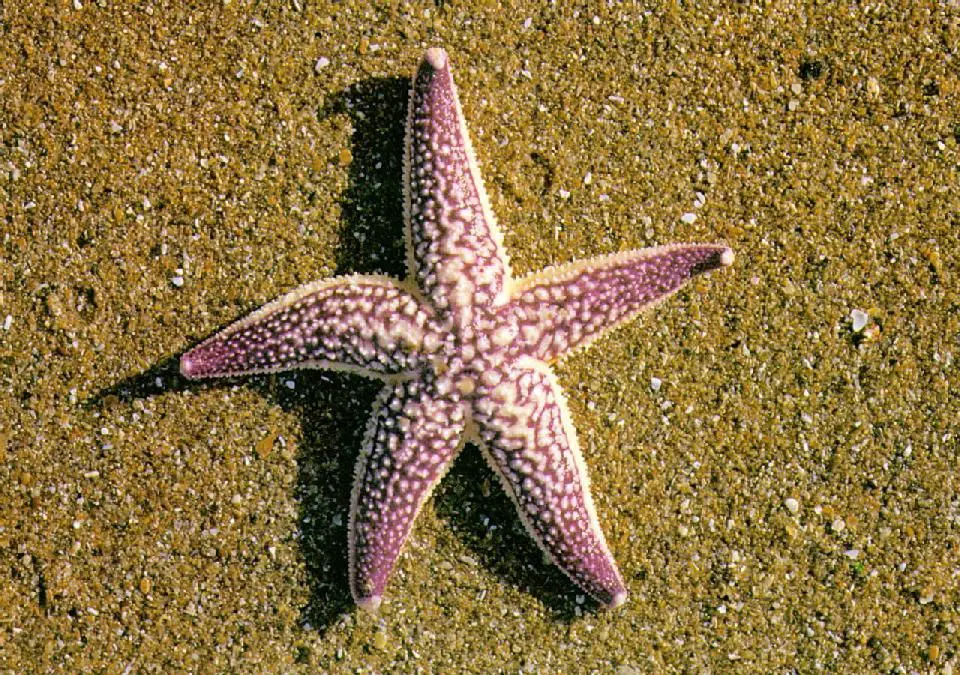
Conclusion
Our journey through the intricate world of starfish anatomy has revealed a fascinating tapestry of adaptations and evolutionary marvels, shedding light on the question that initially intrigued us: do starfish have teeth? As we conclude our exploration, we find that starfish indeed possess specialized dental structures that serve a critical role in their feeding and survival.
The existence of these tiny, jaw-like structures, known as pedicellariae and dermal papillae, showcases nature’s creativity in equipping starfish for life in diverse marine environments. These “teeth” are not the traditional teeth one might envision in mammals, but they are nonetheless efficient tools for grasping and manipulating prey. This revelation adds yet another layer to the already captivating story of starfish anatomy, highlighting their remarkable adaptations for thriving in the complex underwater ecosystems they call home.
Beyond their teeth, starfish are pivotal players in marine ecosystems, occupying essential roles as both predators and prey. Their feeding strategies, which include everting their stomachs to digest prey externally and their ability to regenerate lost body parts, demonstrate their unique position in the marine food web.
Our exploration of starfish anatomy, we are left with a profound appreciation for the intricacies of life beneath the waves. The study of starfish serves as a reminder of the boundless wonders of the natural world and the diversity of life forms that grace our planet. It emphasizes the importance of protecting marine ecosystems, ensuring the continued survival of not only starfish but all the remarkable creatures that inhabit our oceans.
In our quest to understand the mysteries of starfish anatomy and their teeth, we have ventured into a world of beauty, complexity, and adaptation. It is a testament to the wonders of nature and the endless discoveries that await those who dare to explore the depths of the ocean and the intricacies of life within it.

